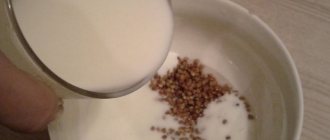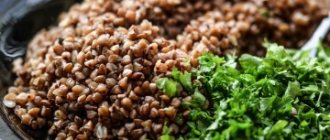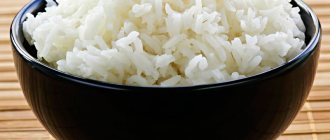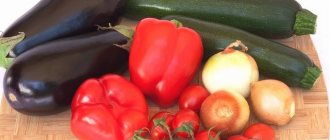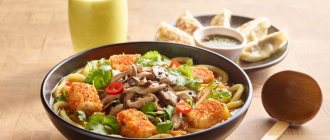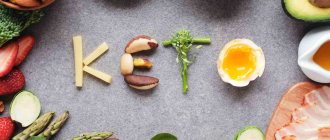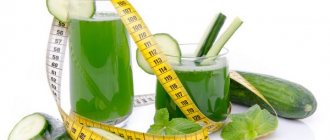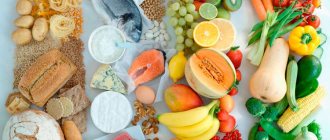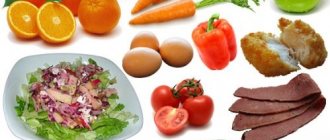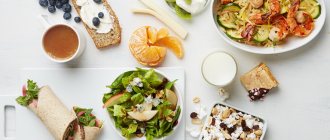Our world is very changeable. The modern world does not stand still, but is constantly evolving, people are inventing new electronic devices and mastering new technologies that people previously considered science fiction and something impossible to implement.
Modern living standards drive us into limits, but we, in turn, must comply with them in order to be in harmony in our world.
Many girls are not happy with the way they look, in particular they are not happy with their physique and constantly want to change something about themselves.
https://youtu.be/V4QJ9GOD9s4
Now there are many different diets that promise you the ideal shape. Many of them are really effective and give the desired result, but some are simply useless.
We will tell you about a diet that has been proven by medicine and time, rich in fiber and other beneficial elements for our body.
What kind of fiber is there?
What is fiber? In the 1970-80s, biologists were categorical - this is a ballast substance that is not digested in the body and settles in it as ballast.
But they soon came to their senses: fiber is the dietary fiber of plants and grains, which is contained in the stems, dense shell, cells, what kind of ballast it is! In the body they did not deceive! – are not digested, gastrointestinal enzymes do not take them. But they take beneficial microorganisms - intestinal microflora and its builders, probiotics. They feed on fiber, and this makes the body healthy, resilient, slim and beautiful.
Fiber is not just one super substance; there are many fibers. Vegetables and fruits, grains and legumes – you can find different “grades” of prebiotics in your usual food. Fiber has a lot of classifications, but we’ll leave it to chemists to understand the intricacies of its composition. We are only interested in one typology:
- Insoluble. These are cellulose and lignin. Such dietary fiber clumps into a hard ball, rolls throughout the body and cleans out all harmful substances. The body, trying to digest this mysterious mass, spends a lot of energy - the result is a healthy mini-diet!
- Soluble. These are pectins, gums, hemicelluloses. This kind of fiber is a real magician. When it enters the body, it quickly absorbs liquid, swells several times, and you immediately feel full. Hunger after such a meal comes later than usual, you eat less - this is another secret of a wonderful figure.
Diet rules
To reduce body weight to benefit, use raw materials correctly: follow the dosage, combine different types of product. If you take the dry version of the preparation, calculate the intake regimen individually. Each age has its own restrictions:
- 18-50 years: men - 35-40 g, women - 25 g;
- after 50 years: men - 30 g, women - 20 g.
Following additional guidelines will ensure maximum benefit from any cellulose consumption option and will promote nutrient absorption:
- increase the amount of fiber gradually;
- eat fruits in the morning;
- combine vegetables with meat and fish;
- drink dry raw materials with liquid in large quantities (about 2 liters of water per day);
- include bran bread and wholemeal flour products in the menu;
- Eat vegetables and fruits with the peel: there is a lot of plant fiber;
- For snacks, use vegetables, fruits, and whole grain breads.
Do not overuse dietary supplements: their excess leads to diarrhea, flatulence, no matter what diet you follow.
The duration of the fiber diet may vary. The food is healthy and balanced. This diet is recommended for overweight people. The dietary rules are as follows:
- Each meal should include 100 grams of lean protein, which is found in the following products: cottage cheese, eggs, chicken breast;
- You need to have additional complex carbohydrates for breakfast and lunch - oatmeal, buckwheat, brown rice, legumes, lentils, boiled in water;
- Once a day you need to eat 50 grams of oil, as it contains omega-3 and omega 6. Such components are found in the following products: olive, sesame oil, and walnut oil.
Use vegetables to prepare various dishes. But, in addition to them, it is important to eat protein with complex carbohydrates and fats.
It is important to eat 4 to 5 times a day throughout the diet.
Fiber-rich foods
Healthy eating involves calculating your calories, including foods rich in vitamins and nutrients, avoiding saturated fat, and paying particular attention to sources of dietary fiber. Insoluble fiber plays a major role in the body, one of which is to ensure optimal bowel function, as well as regulate the pH level of acidity in the intestines.
Beneficial properties of insoluble dietary fiber:
- Promotes regular bowel movements and prevents constipation, reduces the risk of developing colitis, hemorrhoids and colon cancer;
- Accelerate the removal of toxic substances from the body through the colon;
- By maintaining an optimal pH balance in the intestines, insoluble fiber helps prevent the proliferation of pathogenic microflora that can lead to colorectal cancer.
Dietary sources of insoluble fiber include vegetables and greens—especially dark leafy greens, root skins, fruit skins, whole wheat products, corn and wheat bran, nuts, and seeds.
Functions and beneficial properties of soluble fiber
Soluble fiber binds fatty acids, slows the time and rate at which sugar is absorbed by the body, helping regulate blood sugar levels, and promotes normal gastrointestinal function.
Benefits of Soluble Fiber:
Reduce cholesterol levels, especially LDL (bad cholesterol) levels, thereby reducing the risk of developing cardiovascular diseases; Regulates the absorption of sugar by the body, this is important, especially for people suffering from diabetes and metabolic syndrome. People with diabetes who consume a lot of fiber have lower insulin requirements than those who consume less. Dietary sources of soluble dietary fiber include: beans, pinto beans, broccoli, Brussels sprouts, zucchini, spinach, oranges, apples, grapefruits , prunes, grapes, oatmeal and whole grain bread
Food sources of soluble fiber include: beans, pinto beans, broccoli, Brussels sprouts, zucchini, spinach, oranges, apples, grapefruits, prunes, grapes, oatmeal and whole grain bread.
The norm of fiber for the human body
Most nutritionists say the ratio of insoluble to soluble fiber should be 75% and 25%, respectively, or 3 parts insoluble fiber to every 1 part soluble. Since most foods containing high amounts of fiber are of both types, this is something to consider.
Oats, oat bran, psyllium husk and flax seeds are rich in both types of dietary fiber
In other words, your focus should not be on any specific type of fiber, but on your fiber intake in general. For example, if you consume 25g of fiber every day, then you are already meeting your daily needs
Ideally, this is five servings of vegetables and fruits, as well as a small portion of whole grains, daily
For example, if you consume 25g of fiber every day, then you are already meeting your daily needs. Ideally, this is five servings of vegetables and fruits, plus a small portion of whole grains, daily.
In fact, statistics show that the majority of people around the world consume dietary fiber daily much lower than normal, approximately 15 g. About 80% of the population suffers from such a deficiency.
Other reasons to eat fiber
Eating fiber daily has great health benefits. For example, including high fiber foods in your daily diet can help you lose weight. Dietary fiber fills the stomach and makes you feel full without adding calories (since calories from fiber are not absorbed by the body) - this helps treat or prevent excess weight and obesity.
Take, for example, vegetables, fruits and whole grains. All of them are not only high in fiber, but also rich in vitamins and other essential nutrients. In other words, if you're looking for foods high in fiber, consuming them will not only protect your health because of the fiber they contain, but also because you'll be getting extra essential nutrients.
Simple recipes for dishes enriched with fiber
Easy-to-prepare dishes will help replenish the lack of fiber in the body.
Russian salad
Components:
- cabbage - 20 g;
- apples - 2 pcs.;
- carrots - 2 pcs.;
- radish - 1 pc.;
- greens (dill) - 10 g;
- vegetable oil - 40 g;
- Chili pepper and 1 tbsp. l. vinegar.
Cabbage, peeled apples, carrots and radishes are finely chopped and mixed thoroughly. Season with vinegar mixed with salt and chili pepper. Vegetable oil is added to the resulting mass. The finished salad is laid out in a heap and sprinkled with chopped herbs on top.
Baked apples stuffed with dried fruits
Components:
- apples - 4-5 pcs.;
- prunes;
- hazelnut;
- dried apricots;
- almond;
- lemon;
- sugar - 80 g;
- butter - 20 g.
Dried apricots and prunes are soaked in water, then boiled for 5 minutes. Cut into cubes, mix with chopped nuts, butter and 40 g of sugar. The filling is placed in apples that have previously been freed from seed pods and some of the pulp. The fruits are laid out on a greased baking sheet, sprinkled with the remaining sugar and poured over with lemon juice. Apples are baked at 180 °C.
Fried mushrooms with nuts
Components:
- fresh white mushrooms - 0.5 kg;
- half a glass of shelled walnuts;
- medium-sized onion;
- butter - 80 g;
- cilantro;
- parsley;
- Apple vinegar;
- salt;
- ground pepper.
Mushrooms, salted and cut into slices, are fried in butter until fully cooked. Pour in vinegar mixed with pepper, mix with chopped nuts and onions. The finished dish is decorated with chopped herbs.
Kissel from dried apricots
Components:
- dried apricots - 30 g;
- water - 180 g;
- a teaspoon of starch;
- a tablespoon of sugar.
Dried apricots are poured with boiling water and infused for at least 2 hours. Sugar is added to the resulting infusion, brought to a boil. The mixture is cooked for about 30 minutes over low heat. The broth is filtered, the dried apricots are rubbed using a sieve. The resulting puree is combined with the broth and brought to a boil. All that remains is to pour in the starch diluted with cold water in a thin stream and bring the jelly to a boil, stirring constantly.
By enriching your daily diet with fiber, you can confidently expect the following changes for the better:
- comfortable digestion;
- soft regular stools;
- effective weight loss;
- strengthening the immune system;
- prevention of various diseases.
Additional benefits will come from moderate physical activity and healthy eating.
What else to read:
Tips for consuming fiber
- For good gastrointestinal function and weight loss, fiber is necessary. Therefore, regularly consume fruits, vegetables, nuts, dried fruits, seeds, legumes, whole grains, bran or wholemeal bread.
- If possible, reduce the amount of refined foods that lack fiber. Those. give preference to brown rice, bran bread, and cane sugar. Remember that dairy products and meat contain no dietary fiber at all.
- During heat treatment, the amount of dietary fiber in vegetables is halved in just 20 minutes of cooking. Try to consume vegetables fresh or cook them as sparingly as possible, adding them only at the end of cooking.
- The record holder for the content of plant fibers is bran. Add them to porridge, soup, kefir - this will reduce appetite and improve digestion. Before doing this, the bran can be soaked in warm water and waited for 20 minutes until it swells. If you add bran to soup, it can completely replace bread, and your lunch will be more nutritious and healthy. By the way, if you want to prepare a tasty and aromatic soup, then look here for many options for pickle.
- If your diet contains a lot of vegetables, fruits, and cereals, then you don’t need to consume bran. In all other cases, this product is indispensable.
- In some people, consumption of coarse fibers, even within normal limits, can cause flatulence. This is explained by the peculiarity of the intestinal microflora. In this case, consume fiber in small portions, gradually adapting your body to its consumption.
- You should not consume fiber in excess. Since it is a sorbent for cleansing the body, useful microelements and vitamins can also be excreted along with toxic substances. Dietary plant fibers are an essential substance for humans, but they should not be abused.
- Fiber absorbs a large amount of liquid, so be sure to accompany its intake with plenty of water (an additional 2-3 glasses of water per 20-30 grams of dietary fiber).
- If you feel that you are not consuming the right amount of dietary fiber through regular foods, you can buy special supplements. Fiber can be made in the form of powder, granules and even special bars. Moreover, both individual types (cellulose, hemicellulose, lignin, pectin, gums) and combined versions are sold.
- The approximate daily fiber intake is 35-45 g (at least 25 g). Read more about fiber content in foods below. If you decide to increase your intake of dietary fiber, you need to do this gradually. An example of a menu that shows the daily fiber intake:
Fiber content in products: tables
In order to understand how much dietary fiber you consume, we offer you tables with fiber content in foods:
High fiber foods:
Scientists have proven that adequate fiber intake significantly reduces the risk of many diseases.
That's why it's so important to eat fresh vegetables and fruits, legumes and grains, seeds and bran. Fiber is also effective for weight loss, because it reduces appetite and helps cleanse the body of toxins.
Ways to lose weight
Fiber for weight loss should only be used as a short-term diet:
- You can arrange a fasting day, during which you need to drink only one kefir with fiber in the proportion of 250 milliliters per 10 grams of product purchased at the pharmacy. During the day you need to drink only a liter of this kefir, no more;
- Since restriction in foods can lead to stress in the body, it is necessary to do everything to ensure that a diet rich in fiber is gentle. It is recommended to eat familiar foods, adding 10 grams of the beneficial component to them three times a day.
A high fiber diet will reduce your appetite and also help you lose weight. It is important to consult a doctor before starting to follow it.
Beneficial properties of fiber
- Fiber lowers cholesterol, which reduces the risk of developing cardiovascular diseases.
- Fiber also lowers blood sugar levels and, as a result, prevents the development of diabetes.
- Fiber cleanses our body of toxins; fiber reduces the residence time of food in the gastrointestinal tract.
- Fiber quickly makes you feel full, which reduces the likelihood of overeating.
- Fiber prevents our body from absorbing harmful substances that enter our body with food.
- Fiber has a beneficial effect on intestinal function and normalizes the state of microflora in the intestines.
- Fiber improves metabolism in our body.
- Foods rich in fiber contain a lot of magnesium and potassium, and these microelements have a positive effect on the heart.
- Fiber does not interfere with the intake of microelements and vitamins into our body; fiber-rich foods themselves contain many vitamins and nutrients beneficial to our body.
- Fiber reduces the risk of cancer.
What foods contain fiber:
- The most important sources of fiber are fruits, vegetables, and nuts.
- Fruits that contain fiber are apples, oranges, pears, plums, apricots.
- Berries that contain fiber are raspberries, strawberries, strawberries, blackberries.
- Vegetables that contain fiber are red beets, pumpkin, zucchini, carrots, cabbage, parsley, dill, tomatoes, green peas.
- Also, in addition to fresh fruits, fiber is also present in dried fruits: dried apricots, raisins, prunes, dates.
- Nuts containing fiber are walnuts, peanuts, pistachios, hazel, almonds.
- Fiber is also present in oatmeal, bran bread, corn, buckwheat, and legumes.
How much fiber should we consume per day? The general recommendation is about 25 to 30 grams of fiber per day, and for diabetics, about 50 grams of fiber per day. Try to keep your daily fiber intake to at least 35 grams.
And here is a table of fiber content in products.
| Product | A portion | Fiber mass, g |
| Fruits | ||
| Apple | 1 PC | 4 |
| Avocado | 1 PC | 8 |
| Banana | 1 PC | 3 |
| Blueberry | 200 gr | 4 |
| Dried figs | 5 pieces. | 9 |
| Kiwi | 1 PC. | 3 |
| Papaya | 1 PC. | 5 |
| A pineapple | 200 gr | 2 |
| Prunes | 10 pieces. | 1,6 |
| Raspberries | 200 gr | 8 |
| Strawberry | 200 gr | 3 |
| Whole grains (cooked) | ||
| Brown rice | 1 glass | 4 |
| Buckwheat | 1 glass | 17 |
| Quinoa | 1/4 cup | 3 |
| Oat bran | 1/3 cup dry | 2 |
| Oatmeal | 1/2 cup | 2 |
| Vegetables | ||
| Artichokes | 100 gr | 2 |
| Asparagus | 4 pods | 1 |
| Green bean | 200 gr | 4 |
| Broccoli | 200 gr | 4 |
| Cabbage | 200 gr | 3 |
| Onion | 200 gr | 2 |
| Mushrooms | 200 gr | 4 |
| Baked potato | 1 PC | 5 |
| Spinach | 200 gr | 4 |
| Cooked legumes | ||
| Red beans | 1/2 cup | 6,5 |
| Pint beans | 1/2 cup | 7 |
| Lentils | 1/2 cup | 8 |
| Peas | 1/2 cup | 7 |
| Nuts | ||
| Almond | 30 gr | 4 |
| Cashew | 30 gr | 1 |
| Brazilian nut | 30 gr | 1,5 |
| Pistachios | 30 gr | 3 |
| Walnut | 30 gr | 2 |
Some recommendations for consuming fiber:
- Increase your fiber intake in your diet gradually. Also drink enough water.
- It's best to start the day with a bowl of whole grain porridge.
- Try to include fruits, vegetables, and legumes in your diet.
- You can also add dried fruits, fresh berries and fruits, and nuts to the porridge.
- When peeling fruits and vegetables, the fiber in them is not destroyed.
- Whole grains are the best “supplier” of fiber to our body.
- For dessert, it is best to eat fresh fruit rather than sweets.
- Buy whole grain cereals.
Fiber for weight loss.
Everyone knows that consuming fiber not only lowers sugar, but also lowers cholesterol and prevents obesity and promotes weight loss. What happens is that by consuming food rich in fiber, it increases in volume in the stomach, therefore you eat less, and satiety occurs faster
In addition, the intestines are cleansed of toxins and waste, fiber also has a beneficial effect on the development of proper microflora in our intestines, and this is very important for our health.
Eat natural foods in the form in which nature created them, because nature itself takes care of our health. Now you know which foods contain fiber, eat foods rich in fiber and be healthy.
How to get off a fiber diet
To prevent lost weight from coming back, it is important to properly exit the fiber diet. Rules for quitting the diet:
- Introduce new products to the menu every two days;
- After finishing the diet, it is important to feast on fruits, vegetables, meat, dairy products, cereals, seafood, and sweets;
- You need to drink plenty of fluids;
- You need to consume no more than 2000 kcal per day;
- You need to have dinner with light foods, no later than seven in the evening;
- Try to eat small meals.
It is also important to devote a lot of time to physical activity. Go to the gym, do exercises at home, visit the pool, fitness or yoga. To tighten your skin and make it more beautiful, massage regularly, visit a sauna or bathhouse. In the morning, try to run and take a contrast shower. Walking before bed in the evening is helpful.
Now you know what the essence of a fiber diet is and what foods contain it. Together with a nutritionist, create a menu for the period of your choice. Try to follow the rules of dietary nutrition to become slimmer and more attractive.
To properly follow the post-diet days, you must follow some simple rules on which the consolidation of the results obtained from using the diet depends. The point is this:
- Products can be introduced at least every two days;
- Use the following ingredients - fruits, vegetables, meat, dairy products, cereals and any cereals, seafood, saltiness, sweets (in moderation);
- Continue to follow the drinking regime;
- The daily calorie content after a week of release should not exceed more than 2000 kcal;
- Eat only light foods for dinner and no later than seven o’clock in the evening;
- Keep small meals.
In addition to everything listed above, it is necessary to pay special attention to sports. In order to make your body beautiful, sculpted, toned, and bring muscle and skin tone back to normal, you should regularly visit the gym. To do this, create a program according to which in the future you will exercise, you need to hit all muscle groups.
What foods contain a lot of fiber?
Fiber is divided into two types:
- soluble,
- insoluble.
Products rich in the first type of fiber are apples, cabbage, citrus fruits, broccoli, wholemeal flour, various berries, seeds, oats. This fiber can be turned into a jelly-like mass; it is more gentle on the stomach.
Insoluble plant fiber is found in foods such as legumes, grains (mainly in their shells), and in the peels of vegetables and fruits.
What foods contain fiber?
An adult needs 20-30 grams of fiber to avoid problems with digestion, intestinal microflora, and the elimination of toxins and heavy metals.
Therefore, it is important to know which foods contain fiber.
They contain a lot of plant fiber:
- stems,
- roots,
- fruit,
- tubers,
- leaves.
The list of foods containing a lot of fiber starts with the vegetables we are used to. Carrots, cucumbers, tomatoes, beets, peas, beans, broccoli, radishes are vegetables rich in fiber.
Foods containing fiber also include fruits, berries and nuts. Especially pear, apple, grapes, peaches, pistachios and figs.
But the highest fiber content is:
- buckwheat,
- cereals,
- other types of whole grains.
Bread with bran is especially useful.
Please note that foods containing a lot of fiber must be consumed fresh and should not be cooked. Avoid the following additives in foods: inulin, polydextrose, maltodextrin
Avoid the following additives in foods: inulin, polydextrose, maltodextrin.
Many people consume milk, fish, meat, cheese, thinking that they are enriching their body with healthy fiber, but we note that these are products that do not contain fiber.
Amount of fiber in food
List of foods high in fiber. The amount of fiber in products is indicated per 100 grams:
- Beans and peas - 15%;
- White rice and wheat - 8%;
- Oats and barley - 8–10%;
- Nuts, almonds, olives -10-15%;
- Fresh vegetables - 2–5%. Vegetables with the most fiber: green peas, Brussels sprouts, broccoli, asparagus, carrots;
- Berries - 3–7%. Raspberries and blackberries contain the most fiber;
- Fruits and citrus fruits - 5–10%. The following fruits contain the most fiber: bananas, peaches, pears and apples.
Table of foods containing fiber
You can quickly create your own diet by including foods that contain fiber. published by econet.ru
| Name | Quantity | Fiber (grams) |
| Fruits | ||
| Apples with skin | 1 average | 5,0 |
| Apricot | 3 medium | 0,98 |
| Apricots, dried | 5 parts | 2,89 |
| Banana | 1 medium | 3,92 |
| Blueberry | 1 cup | 4,18 |
| Cantaloupe, cubes | 1 cup | 1,28 |
| Dried dates | 2 medium | 3,74 |
| Grapefruit | 1/2 medium | 6,12 |
| Orange | 1 medium | 3,4 |
| Peach | 1 medium | 2,0 |
| Peaches, dried | 3 parts | 3,18 |
| Pear | 1 medium | 5,08 |
| Plum | 1 medium | 1,0 |
| Raisin | 1.5 ounces | 1,6 |
| Raspberries | 1 cup | 8,34 |
| Strawberry | 1 cup | 3,98 |
| Vegetables | ||
| Avocado (fruit) | 1 medium | 11,84 |
| Beets, cooked | 1 cup | 2,85 |
| Beet leaves | 1 cup | 4,2 |
| Bok choy, cooked | 1 cup | 2,76 |
| Broccoli, cooked | 1 cup | 4,5 |
| Brussels sprouts | 1 cup | 2,84 |
| Cabbage, cooked | 1 cup | 4,2 |
| Carrot | 1 medium | 2,0 |
| Carrots, cooked | 1 cup | 5,22 |
| Cauliflower, cooked | 1 cup | 3,43 |
| Slaw | 1 cup | 4,0 |
| Sweet corn | 1 cup | 4,66 |
| Green bean | 1 cup | 3,95 |
| Celery | 1 stem | 1,02 |
| Collard greens, cooked | 1 cup | 7,2 |
| Fresh onions | 1 cup | 2,88 |
| Peas, cooked | 1 cup | 8,84 |
| Bell pepper | 1 cup | 2,62 |
| Popcorn | 3 cups | 3,6 |
| Potatoes baked in their jackets | 1 medium | 4,8 |
| Spinach, cooked | 1 cup | 4,32 |
| Pumpkin, cooked | 1 cup | 2,52 |
| Sweet potatoes, boiled | 1 cup | 5,94 |
| Chard, cooked | 1 cup | 3,68 |
| Tomato | 1 medium | 1,0 |
| Large-fruited pumpkin, cooked | 1 cup | 5,74 |
| Zucchini, cooked | 1 cup | 2,63 |
| Cereals, grains, pasta | ||
| Bran bread | 1 cup | 19,94 |
| Whole wheat bread | 1 slice | 2,0 |
| Oats | 1 cup | 12,0 |
| Whole grain pasta | 1 cup | 6,34 |
| Cinnamon rice | 1 cup | 7,98 |
| Legumes, nuts, seeds | ||
| Almond | 1 oz (28.35 g) | 4,22 |
| Black beans, cooked | 1 cup | 14,92 |
| Cashew nuts | 1 oz (28.35 g) | 1,0 |
| Flax seeds | 3 spoons | 6,97 |
| Chickpea fruits (beans), cooked | 1 cup | 5,8 |
| Beans, cooked | 1 cup | 13,33 |
| Lentils, cooked | 1 cup | 15,64 |
| Lima beans, cooked | 1 cup | 13,16 |
| Peanut | 1 oz (28.35 g) | 2,3 |
| Pistachios | 1 oz (28.35 g) | 3,1 |
| Pumpkin seeds | 1/4 cup | 4,12 |
| Soybeans, cooked | 1 cup | 7,62 |
| Seeds | 1/4 cup | 3,0 |
| Walnuts | 1 oz (28.35 g) | 3,1 |
Cellulose
One of the most important components of food products is dietary fiber. They are soluble and insoluble in water, of plant (mainly) and animal origin (rather an exception, for example, chitosan). But dietary fiber of plant origin is often classified as a separate group and is even called synonymous with the term dietary fiber. This is the so-called fiber.
The name “fiber” indicates the origin of these dietary fibers, since fiber is mainly represented by cellulose, the main component of plant cell walls, hemicellulose lignin, as well as other cell wall remnants.
The reason for the focus on fiber is that it makes up the bulk of the dietary fiber a person consumes. What are the main sources of dietary fiber? These are foods rich in fiber: fruits, vegetables, herbs, bran. Only a few fruits and vegetables have significant amounts of non-fibre fiber (for example, apples and citrus fruits are rich in pectin), but in other sources dietary fiber is predominantly fiber.
In percentage terms, the foods richest in fiber are grain bran, especially rye, wheat, oat bran (up to 50% fiber), whole grain flour products (up to 10%), beans (up to 8%), greens (up to 4%), and also carrots, cabbage, apples, potatoes, etc.
The mechanism of action of fiber is the same as that of all dietary fibers. In the small intestine, fiber is not digested, but it sorbs, that is, collects, bile acids, fats (which helps lower cholesterol in the blood) and some unwanted toxic substances, which fiber retains and removes with feces. By creating the required volume of content in the intestinal lumen, fiber helps normalize the volume and frequency of stool, as well as its consistency. This is why bran is so beneficial for those who suffer from disorders and constipation.
In the large intestine, fiber is a necessary substrate for beneficial microflora, that is, bacteria needed by the body. Here, fiber promotes the growth of beneficial microorganisms and thereby indirectly prevents the development of pathogenic and opportunistic microorganisms.
The physiological requirement directly for fiber has not been established (known only for dietary fiber in general: 20-30 g per day). However, the need for dietary fiber can be fully satisfied through foods rich in fiber, and the need for the latter, in turn, can be fully satisfied through bran, the benefits of which can hardly be overestimated.
For constipation
As a result of poor nutrition, a sedentary lifestyle and impaired peristalsis, dense feces are formed in the intestines, leading to intoxication (poisoning) of the body, the formation of polyps and hemorrhoids.
With the help of fiber, you can activate intestinal motility by irritating receptors in the mucous membrane with particles of insoluble fiber, as well as soften and increase the volume of feces, which will help get rid of constipation.
If you are prone to constipation, the basis of your daily diet should be foods rich in fiber:
- bread made from wholemeal flour (wheat or rye), with bran;
- whole grain porridge with water;
- raw and thermally processed vegetables (zucchini, carrots, cabbage, beets);
- greens (celery, parsley, dill);
- fresh fruits and dried fruits (especially prunes);
- fruit compotes.
During pregnancy, constipation can be caused by physiological processes - the influence of a large amount of progesterone in the blood, causing relaxation of the uterus and intestines. For regular bowel movements during pregnancy, in addition to vegetables and fruits, it is also recommended to eat bran from wheat, oats, rye and drink 1.5-2 liters of water.
Properties of dietary fiber
Scientists and nutritionists know the properties of dietary fiber, some of which are listed below.
Firstly, they retain water in the intestinal lumen, thereby increasing the volume of the food bolus, stimulating peristalsis and accelerating the movement of harmful metabolic products through the intestines, thereby reducing the time of their contact with the mucous membrane of the colon.
Secondly, dietary fiber is able to bind and remove from the body substances such as cholesterol, mycotoxins, heavy metals, carcinogens, ammonia, bile pigments, etc. This is the reason that dietary fiber has a beneficial effect on cholesterol metabolism and reduces urea levels in the blood and also help neutralize toxins.
Thirdly, due to the presence of dietary fiber, the calorie content of vegetables is reduced. If, for example, the energy content of 100 grams of rye bread is 214 kcal, then 100 grams of eggplant - 24 kcal, zucchini - 23, white cabbage - 27, green onions - 33, carrots - 20, fresh cucumbers - 12, sweet peppers - 25, radishes - 28, lettuce - 14 and tomatoes - on average 16 kcal. Without having a high energy value, most vegetables, due to the abundance of fiber, contribute to an early and fairly persistent feeling of fullness.
This property of dietary fiber can hardly be overestimated in the complex of measures used for the prevention and treatment of nutritional obesity.
